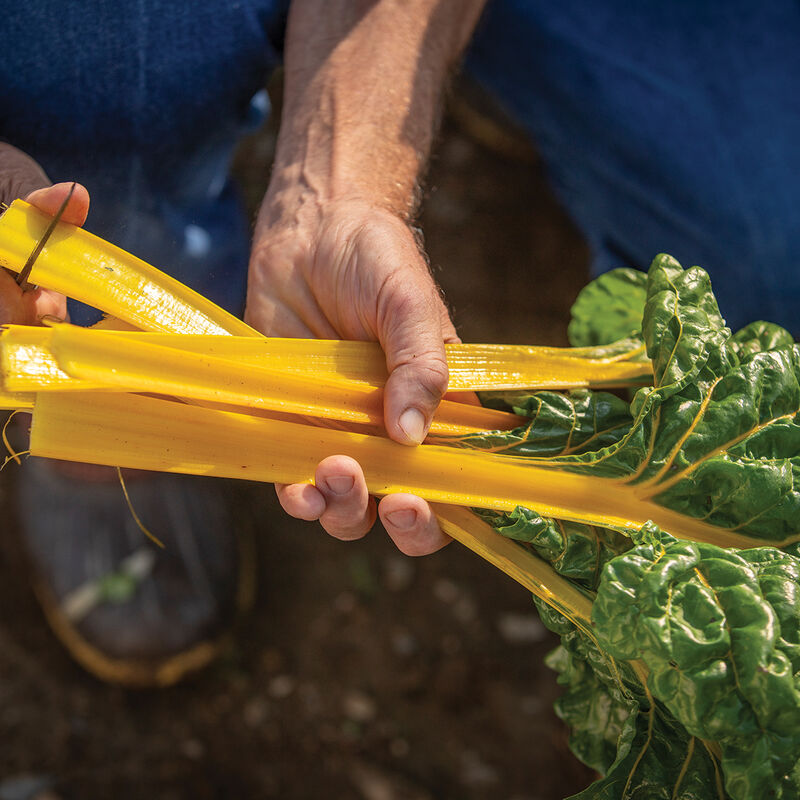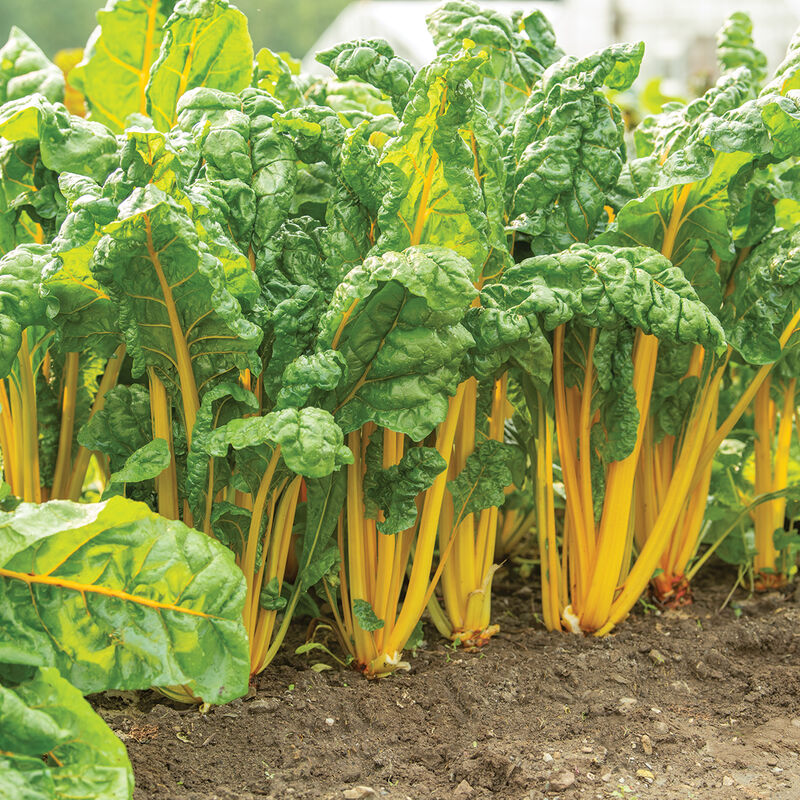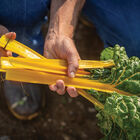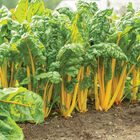Heart of Gold Organic Swiss Chard Seed
Heart of Gold Organic Swiss Chard Seed
Wide, golden-orange petioles.
Improved gold chard selected for bolt tolerance, uniform color, and wider petioles. A showy display—deeply savoyed, dark green leaves with high lustre contrast beautifully with the rich, golden-orange petioles. Vigorous plants and full leaves make for excellent yields of top-quality product. Compared to Oriole, petioles are wider with richer, more uniform color. Bred at Johnny's by the late Dr. John Navazio. Plant Variety Protected. Decorticated (rubbed) seeds. USDA Certified Organic.Specs:
- This product does not ship to the following countries: Finland, France, United Kingdom, Ireland, Portugal, Taiwan.
SCIENTIFIC NAME:
Beta vulgarisCULTURE:
Soil pH should be over 6.0. Cool and mild weather is preferred, though chard has some heat tolerance. Seeds germinate in soil temperatures from 40–100°F (5–38°C) with an optimum of 86°F (30°C). Seedlings will tolerate light frosts, and mature plants will tolerate moderate frosts. Some varieties may experience bolting pressure if seedlings are exposed to prolonged temperatures in the low 50s or below. Swiss chard may overwinter in mild areas.DAYS TO MATURITY:
From date of direct seeding.PELLETED SEED:
If using pelleted seed, we recommend consistent soil moisture during the germination period. Pelleted seed must be kept cool and dry prior to planting, and should be used within one year of purchase. Pellets are made of inert NOP-compliant materials, and are size 18.0 — suitable for use with Stanhay seeders (belt size 18.0) or many of the precision seeders offered by Johnny's.TRANSPLANTING:
Sow seed in a cold frame or indoors in early spring, about 5–6 weeks before transplanting out after heavy frosts become infrequent. Sow 1/2" deep, 2–3 seeds per cell in 72- or 128-cell flats. Thin to 1–2 plants per cell. Transplant out 4–6" apart in rows 12–18" apart.DIRECT SEEDING:
Bunching: Sow about 6 seeds/ft., 1/2" deep, rows 12–18" apart from midspring and on into midsummer (fall where winter is mild). Thin to 4–6" apart for larger leaves. Baby Leaf: Sow 1/4– 1/2" deep at 1–2 seeds/inch in rows at least 2" apart from midspring into late summer (fall where winter is mild). Planting too densely can lead to overcrowding and stunted growth. When planting more seeds per inch, be sure to plant rows farther apart.AVG. DIRECT SEEDING RATE: Bunching: 1 oz./300', 3¼ oz./1,000', 4½ lb./acre at 6 seeds/ft. in rows 24" apart. Baby Leaf: 4,000 seeds/100', 1 oz./45'.HARVEST: Bunching: Cut or snap mature leaves individually. New leaves will grow for multiple harvests. Baby Leaf: Harvest with a knife when leaves reach desired size, about 3–6". Cut about an inch above the soil to allow for clean regrowth, making sure to cut above the basal plate. Cut again when leaves reach desired size (5–14 days, depending on variety).DECORTICATED SEEDS:
Decorticated seed has been processed by rubbing to remove angular, corky edges that prevent the seed from flowing evenly through mechanical seeders.SIZED SEEDS:
"Sized" seeds have been sorted so they are roughly the same size. This consistency allows for more accurate spacing with mechanical seeders and more even germination. Swiss chard seed is sized, except when noted in the product description.SEEDS/LB.: 23,700–48,500 (avg. 30,900).PACKET:
200 seeds. Bunching: sows 33–34'. Baby Leaf: sows 5–6'.Johnny's is committed to your success, every step of the way.
We want you, our customer, to be 100% satisfied with all of our seeds, tools, and supplies.
If anything you purchase from us proves unsatisfactory, we will either replace the item or refund the purchase price.










